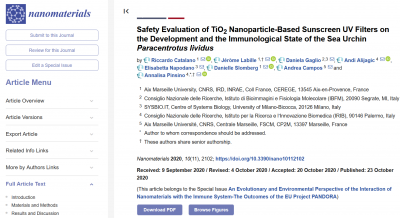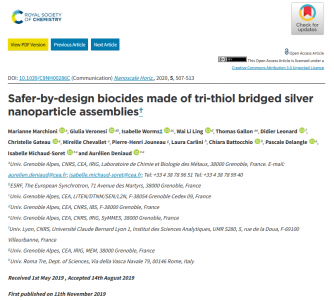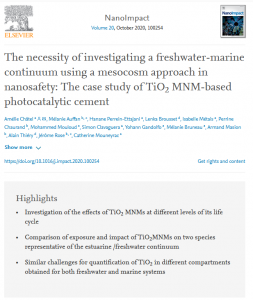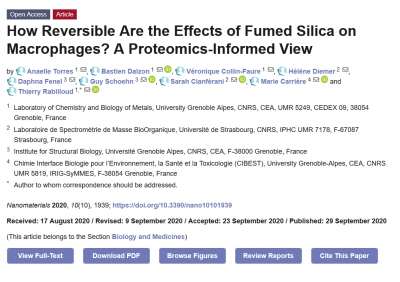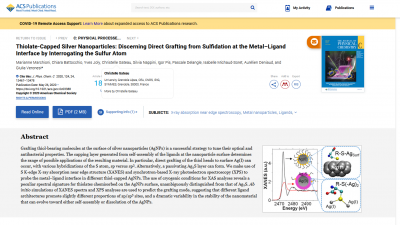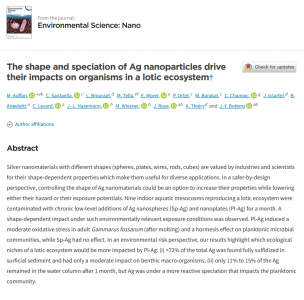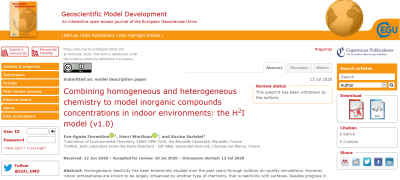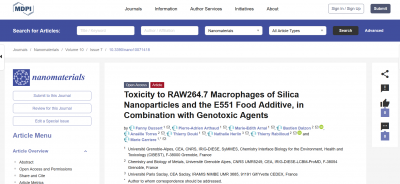Sunscreens are emulsions of water and oil that contain filters capable of protecting against the detrimental effects of ultraviolet radiation (UV). The widespread use of cosmetic products based on nanoparticulate UV filters has increased concerns regarding their safety and compatibility with both the environment and human health. In the present work, we evaluated the effects of titanium dioxide nanoparticle (TiO2NP)-based UV filters with three different surface coatings on the development and immunity of the sea urchin, Paracentrotus lividus.
Read More
Silver nanoparticles (AgNPs) are efficient biocides increasingly used in consumer products and medical devices. Their activity is due to their capacity to release bioavailable Ag(I) ions making them long-lasting biocides but AgNPs themselves are usually easily released from the product. Besides, AgNPs are highly sensitive to various chemical environments that triggers their transformation, decreasing their activity.
Read More
Production of Manufactured Nanomaterials (MNMs) has increased extensively due to economic interest in the current years. However, this widespread use raises concern about their impact on human and environment.
Read More
Synthetic amorphous silica is one of the most used nanomaterials, and numerous toxicological studies have studied its effects. Most of these studies have used an acute exposure mode to investigate the effects immediately after exposure. However, this exposure modality does not allow the investigation of the persistence of the effects, which is a crucial aspect of silica toxicology, as exemplified by crystalline silica.
Read More
Short-term, aqueous aging of a commercial nanocomposite TiO2 UV filter with a protective SiO2 shell was examined in abiotic simulated fresh- and seawater.
Read More
Grafting thiol-bearing molecules at the surface of silver nanoparticles (AgNPs) is a successful strategy to tune their optical and antibacterial properties. The capping layer generated from self-assembly of the ligands at the nanoparticle surface determines the range of possible applications of the resulting material.
Read More
Candidates should hold a Master degree comparable to a Swiss University M.Sc in biology, biochemistry, environmental science or equivalent. The candidate should have a strong interest in scientific research and the aquatic environment.
Read More
Silver nanomaterials with different shapes (spheres, plates, wires, rods, cubes) are valued by industries and scientists for their shape-dependent properties which make them useful for diverse applications. In a safer-by-design perspective, controlling the shape of silver nanomaterials could be an option to increase their properties while lowering either their hazard or their exposure potentials.
Read More
Homogeneous reactivity has been extensively studied over the past years through outdoor air-quality simulations. However, indoor atmospheres are known to be largely influenced by another type of chemistry, that is reactivity with surfaces.
Read More
Synthetic amorphous silica (SAS) is used in numerous applications and included in many daily products to which humans are exposed via inhalation, ingestion, or skin contact.
Read More









